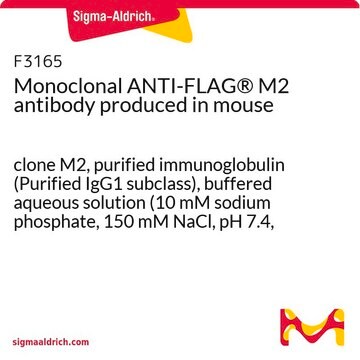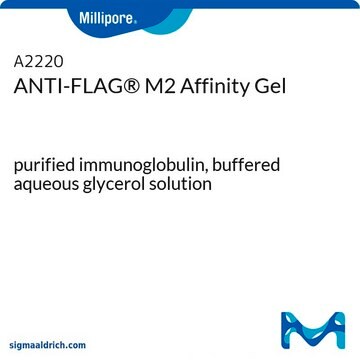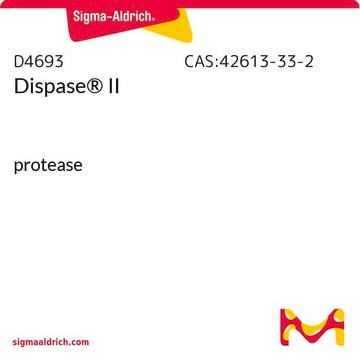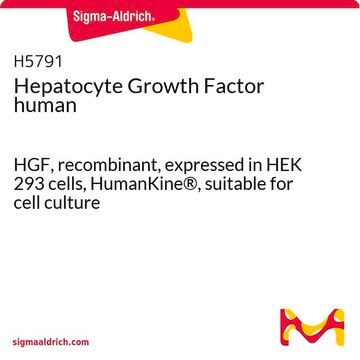추천 제품
면역원
Human LDL native protein.
애플리케이션
Anti-LDL antibody produced in chicken is suitable for indirect ELISA and western blotting analysis at a dilution of 1:500, for tissue or cell staining at a dilution of 1:200.
생화학적/생리학적 작용
The Low-Density Lipoprotein (LDL) Receptor is a mosaic protein encoded by the LDLR gene in humans and belongs to the Low density lipoprotein receptor gene family. It is located on chromosome number 19. LDL receptor is a mosaic protein constituiting of exons shared with different proteins. It is crucial for cholesterol homeostasis and deficiency in LDLR functions leads to hypercholesterolemia. LDLR is a type I transmembrane protein that needs O-glycosylation for stable expression at the cell surface. Mutation in this gene may cause familial hypercholesterolemia (FH), which is an autosomal dominant disease.
물리적 형태
Solution in phosphate buffered saline containing 0.02% sodium azide.
면책조항
Unless otherwise stated in our catalog or other company documentation accompanying the product(s), our products are intended for research use only and are not to be used for any other purpose, which includes but is not limited to, unauthorized commercial uses, in vitro diagnostic uses, ex vivo or in vivo therapeutic uses or any type of consumption or application to humans or animals.
적합한 제품을 찾을 수 없으신가요?
당사의 제품 선택기 도구.을(를) 시도해 보세요.
Storage Class Code
10 - Combustible liquids
WGK
WGK 1
Flash Point (°F)
Not applicable
Flash Point (°C)
Not applicable
개인 보호 장비
Eyeshields, Gloves, multi-purpose combination respirator cartridge (US)
가장 최신 버전 중 하나를 선택하세요:
Núria Ros-Rocher et al.
Proceedings of the National Academy of Sciences of the United States of America, 120(18), e2216668120-e2216668120 (2023-04-24)
Regulated cellular aggregation is an essential process for development and healing in many animal tissues. In some animals and a few distantly related unicellular species, cellular aggregation is regulated by diffusible chemical cues. However, it is unclear whether regulated cellular
Paulo Caleb Junior Lima Santos et al.
Atherosclerosis, 233(1), 206-210 (2014-02-18)
Familial hypercholesterolemia (FH) is an autosomal dominant disease caused mainly by LDLR mutations. This study assessed the influence of the presence and type of LDLR mutation on lipid profile and the response to lipid-lowering therapy in Brazilian patients with heterozygous
Manuela Sauter et al.
STAR protocols, 3(3), 101664-101664 (2022-09-14)
Different types of immune cells are involved in atherogenesis and may act atheroprotective or atheroprogressive. Here, we describe an in vitro approach to analyze CD11c+ cells and CD11c+-derived ApoE in atherosclerosis. The major steps include harvesting mouse bone marrow, plating
Nis Borbye Pedersen et al.
The Journal of biological chemistry, 289(25), 17312-17324 (2014-05-07)
The low density lipoprotein receptor (LDLR) is crucial for cholesterol homeostasis and deficiency in LDLR functions cause hypercholesterolemia. LDLR is a type I transmembrane protein that requires O-glycosylation for stable expression at the cell surface. It has previously been suggested
Isabel De Castro-Orós et al.
BMC medical genomics, 7, 17-17 (2014-04-09)
GWAS have consistently revealed that LDLR locus variability influences LDL-cholesterol in general population. Severe LDLR mutations are responsible for familial hypercholesterolemia (FH). However, most primary hypercholesterolemias are polygenic diseases. Although Cis-regulatory regions might be the cause of LDL-cholesterol variability; an
활성 필터
자사의 과학자팀은 생명 과학, 재료 과학, 화학 합성, 크로마토그래피, 분석 및 기타 많은 영역을 포함한 모든 과학 분야에 경험이 있습니다..
고객지원팀으로 연락바랍니다.








